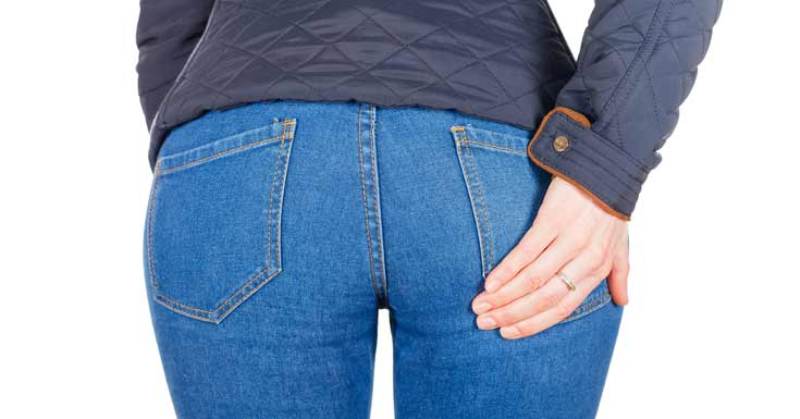Have you ever experienced those painful pimples around the tailor bone area? However, it is not a pimple but a pilonidal cyst. You feel pain, especially during defecation. You can treat it in its initial stages.
Ever wondered how to get rid of them? No, not by using medications or surgery but natural home remedies. Before taking any step you must know everything about it. So, keep reading.
Table of Contents
What Is A Pilonidal Cyst?
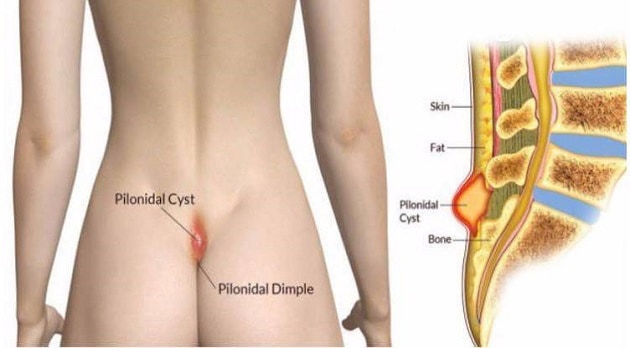
A pilonidal cyst is an abnormal sac filled with debris and hair. It develops at the bottom of your tailbone (sacrum) or coccyx. Basically, it is the top of the cleft of your buttocks. It looks like a large pimple and is more common in men.
It usually affects the younger people. It is a kind of skin infection. The skin becomes infected and causes painful abscess. The cyst gets filled with a yellowish thick substance known as pus.
Other names for pilonidal cysts are pilonidal sinus, pilonidal abscess, or sacrococcygeal fistula. Pilonidal cysts can be of two types:
- Asymptomatic is when you do not have pain or discomfort
- Symptomatic is when you feel pain and show symptoms
This sounds scary, right? However, let me tell you that it is curable. I assure you that you can treat it by yourself. With the use of various home remedies, you can get relief from its symptoms. You will find the best and most effective remedies in this article. But first, understand what it is all about.
Home Remedies To Get Rid Of Pilonidal Cyst
1. Tea Tree Oil
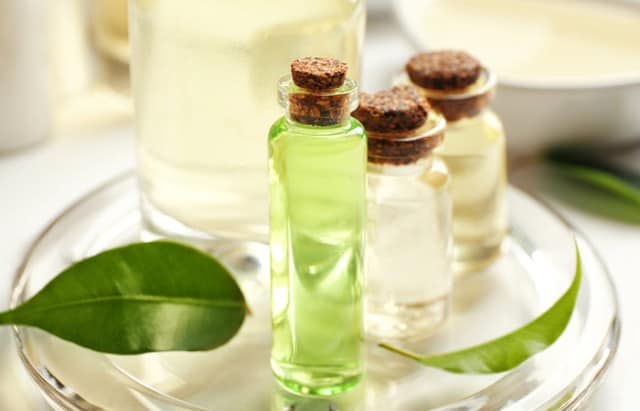
Tea tree oil is high in antioxidants. These antioxidants help reduce inflammation of the cyst. Tea tree oil has antifungal and antibacterial properties.
This oil helps in the shrinkage of the boil. It also lowers further chances of getting the infection. It also allows your body to develop tissues around the cyst. This prevents the swelling of the cyst. It penetrates deep into the skin. Thus, it promotes the faster healing process.
Tea tree oil also prevents the development of scars in the affected area. You can also use peppermint oil or jojoba oil. Both of these essential oils are great for pilonidal cysts.
These essential oils also nourish and soothe your skin. Along with this, they reduce irritation and itchiness too.
Things You Will Need:
- 2-3 drops of tea tree oil
- A cotton ball
- A Band-Aid
Do:
- Dip the cotton ball in the oil.
- Put it on the cyst.
- Cover the cotton with the help of a Band-Aid.
- Leave this on for 2-3 hours.
Repeat this 2-3 times a day to heal your cyst.
2. Sage
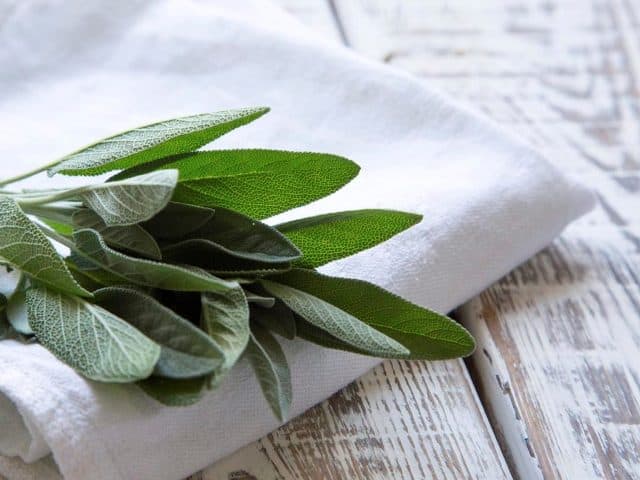
A perennial herbal plant that is one of the best home remedies is sage. It helps you to kick off the infection. It strengthens and cleans out the immune system naturally.
The sage oil helps in removing toxins from the body. It prevents the formation of cysts in that area. Sage tea will help to reduce the symptoms of this infection.
You will notice relief in the symptoms within a week. It can take more time depending on the severity of the condition. You can completely trust sage leaves to treat pilonidal cyst as no side effects have been reported yet.
Things You Will Need:
- 50 mg of sage leaves
- 250 ml of water
Method:
- Start by boiling 250 ml of water.
- Crush the sage leaves and drop them into boiling water.
- Let them steep for about four to five minutes.
- Strain the water and drink this tea daily until it wards off the infection. Drink at least two to three times a day.
NOTE- Avoid adding sugar or milk to this tea. It is actually not a tea but the only solution of sage leaves.
You can also store this mixture in the refrigerator if you find it cumbersome. But freshly prepared tea is better.
Alternative Method
- Grind the sage leaves and add water to it.
- Apply the thick paste to the affected area.
- Let it sit for about 20 minutes.
- Rinse it off with normal water.
Follow this remedy two times a day.
You can also apply sage oil to the affected area. It is also very beneficial. Also, using oil is simpler than making a paste or tea.
3. Baking Soda

Baking soda is a common ingredient in many foods. Apart from this, it is also an effective remedy to treat pilonidal cyst.
Baking soda has antimicrobial properties that fight the infection. It helps in reducing inflammation and discomfort. It also soothes the irritated skin.
Things You Will Need:
- ½ teaspoon baking soda
- ½ teaspoon white vinegar
Do:
- Mix the two ingredients together well.
- Apply it to the pilonidal cyst and leave it on for 15-20 minutes.
- Wash it off with water.
Repeat this remedy daily to treat cyst.
4. Castor Oil
Castor oil is another effective remedy to treat a pilonidal cyst. It reduces the swelling of the cyst. It has anti-inflammatory properties that lower the inflammation. It also speeds up the recovery process. Castor oil is antimicrobial. Thus, it may prevent you from further pathogenic bacteria.
Things You Will Need:
2-3 drops of castor oil
Do:
- Massage with the oil in the infected area.
- Leave it on for a night.
- Wash it off in the morning.
Alternatively:
- Soak a cotton wad in the oil.
- Cover the cyst with the cotton wad.
- Cover it with a Band-Aid.
- Leave it overnight.
Repeat this remedy every day before going to bed.
5. Onions
Onions have antimicrobial and antibacterial properties. It has high content of Sulphur. Thus, it is very effective in treating cyst. It also fights other infections. Onions prevent the body from any further bacterial infections.
Things You Will Need:
- A slice of onion (it must be thick)
- Bandage
Do:
- Place the onion slice on the affected area.
- Hold it on with a bandage.
Change the onion slice after every 2-3 hours. Do this remedy every day until the cyst heals.
6. Honey And Cinnamon
Honey is anti-inflammatory and antiseptic. It can quickly heal the cyst infection. Honey alleviates the symptoms of pilonidal cyst quickly. Cinnamon is also similar in the properties to honey. It has antimicrobial properties and rejuvenates the tissues. It naturally adds to the benefits of honey.
Things You Will Need:
- 2 tablespoons honey
- ½ teaspoon cinnamon powder
Do:
- Mix the two ingredients to make a thick paste.
- Apply this paste to the infected area.
- Leave it on for few hours.
Repeat this remedy for two times a day.
7. Epsom Salt
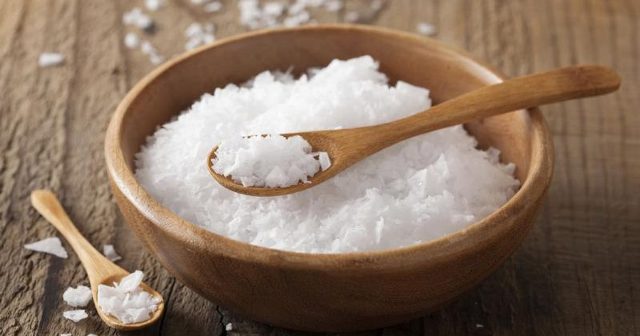
Epsom salt removes the excess liquid from the subcutaneous layers of the skin. For example- it helps in drawing out the liquid from boils and cyst.
It also helps you to get rid of irritation and pain. Epsom salt lowers the inflammation due to the cyst. Epsom salt contains magnesium sulphate. It helps in the draining of pus from the cyst.
Thus, Epsom salt aids in the healing process. Along with this, it calms and relaxes your mind after days of work.
Things You Will Need:
- 4-5 teaspoons of Epsom salt
- Warm water
Do:
- Add Epsom salt to warm water in a bathtub.
- Soak yourself in it for about 15-20 minutes.
Repeat this remedy once a day until it treats the cyst.
Alternative Method:
- You can also apply this to the affected area. For this, follow the given steps:
- Add 1 tablespoon of Epsom salt in 1 cup of water.
- Dip a cotton ball in the solution.
- Place it on the affected area and let it sit for about 20-30 minutes.
Repeat this remedy once every day.
8. Coconut Oil

Coconut oil has antibacterial and anti-fungal properties. It nourishes your skin.The fatty acid present in coconut oil help in reducing inflammation. It’s an effective remedy to treat cyst.
Things You Will Need:
- ½ teaspoon coconut oil
Do:
- Apply the oil to the affected area.
- Rub it gently for few minutes.
- Leave the oil on it for 2-3 hours.
Repeat this remedy for 2 times a day.
9. Beeswax
Beeswax is also a natural home remedy to treat pilonidal cysts. It is high in vitamin A. Vitamin A lowers the risk of infections. It also rejuvenates the damaged cells. It allows the development of the cells that are affected by this problem.
Beeswax is anti-inflammatory, antibacterial, and germicidal. It is often used to cure many skin disorders. Not only beeswax, foods high in vitamin A treat pilonidal cyst. Other foods that are high in vitamin A include:
- Sweet potatoes
- Carrots
- Red pepper
- Butternut
- Lettuce
- Apricots
- Squash
- Liver
You can also take vitamin A supplements to get its benefits.
Here is the method to use beeswax:
Things You Will Need:
1 tablespoon beeswax
Do:
- Melt the beeswax till it is vicious.
- Apply it to the cysts and leave it on for about 10-15 minutes.
Alternatively, you can grate it and then apply it.
10. Iodine
Iodine is one of the best home remedies to treat pilonidal cyst. It reduces the symptoms of cysts. Thus, it eliminates pain and discomfort associated with the cyst. You can buy iodine solution from stores.
Things You Will Need:
- A cotton ball
- Iodine solution
Do:
- Dip a cotton ball in the iodine solution.
- Place it on the cyst and press it for some time.
- Hold it on with a bandage and leave it for about few hours.
Repeat this process for two times a day.
11. Slaked Lime
Slaked lime is another best natural remedy to treat pilonidal cyst. It has anti-inflammatory properties and is very popular in India.
Indians often use its betel leaves to get relief from pain. It is usually effective in relieving pain due to bee stings. Slaked lime can also cure skin infections. You can also combine slaked lime with turmeric. It will be more beneficial.
Things You Will Need:
- Slaked lime
- 1 cup of water
Do:
- Add slaked lime into the water.
- The mixture will become hot instantly.
- Use the cloth poultice to keep the mixture.
Apply it to the cyst for few minutes two times a day.
12. Azadirachta Indica
Neem is the common name for Azadirachta indica. You must be aware of the limitless benefits, this herb provides. People have used this herb for years and still, it has got a lot of popularity.
The seeds, the leaves and the oil extracted from this plant are high in antibacterial properties. It acts as an antiseptic agent that protects you from infections. Thus, you can use it to treat pilonidal cyst.
Things You Will Need:
- Leaves of Azadirachta indica
- Water
Do:
- Grind the leaves and add water to make a thick paste.
- Apply it to the cyst for about 20 minutes.
- Rinse off with lukewarm water.
Repeat this remedy for two times a day.
Alternative Method:
- Boil leaves in a cup of water.
- Let it steep until the amount reduces to half.
- Let it cool and then use it to wash cysts.
Repeat this remedy for two times a day.
13. Burdock Root
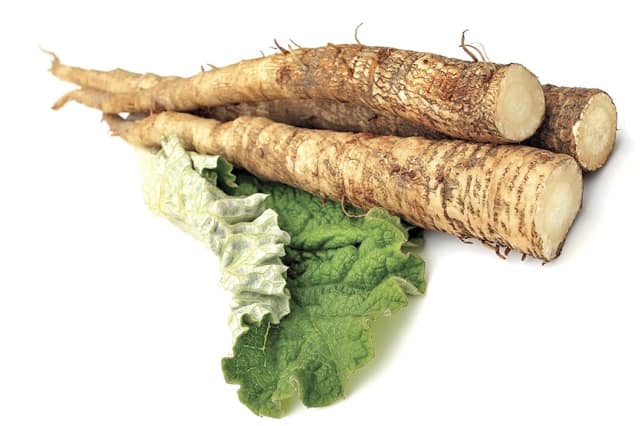
Burdock root is an effective herbal remedy to treat various skin infections. It is helpful in curing eczema and psoriasis.
Apart from this, it can also treat pilonidal cyst. It flushes out toxins from your body. Thus, it has blood purifying properties. It is high in vitamin C. Vitamin C helps in the shrinkage of the cyst.
Things You Will Need:
- ½ teaspoon dried burdock root powder
- 1 tablespoon honey
Do:
- Add honey to burdock root powder.
- Smear this paste gently on the affected site.
Repeat this remedy for 2-3 times a day.
14. Bloodroot Powder
Bloodroot powder is a great herb to treat cyst. It helps reduce the inflammation.
Things You Will Need:
- 1/8 teaspoon bloodroot powder
- 2 tablespoon castor oil
- Q-tip
Do:
- Mix the oil with bloodroot powder.
- Keep the mixture in an air-tight container.
- Use a Q-tip to take out some of this oil and apply on the cyst.
Repeat this remedy for 3-4 times a day.
15. Black Tea
Black tea has acidic properties that make it so effective. It reduces the symptoms of the pilonidal cyst. It eliminates pain and swelling.
Black tea contains flavonoids that lower the inflammation. It has antibacterial properties that wards off the infection.
Things You Will Need:
- A black tea bag
Do:
- Dip a black tea bag in hot water for 5 minutes.
- Squeeze out the excess water after taking it out.
- Place it on the cyst and let it sit for about 10 minutes.
- You can also use a green tea bag if a black tea bag is not at your home.
Repeat this remedy for 3-4 times a day.
16. Turmeric
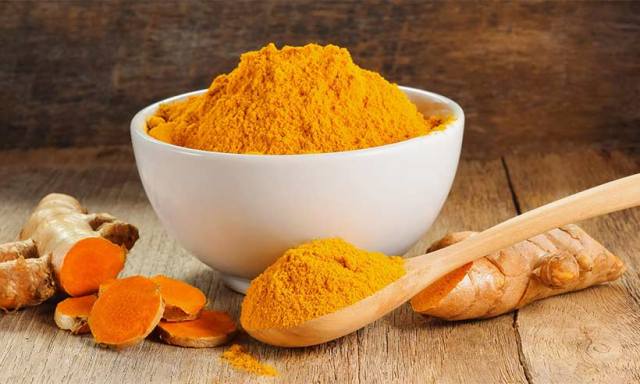
Turmeric is a common herb used in many households. It is basically used in foods and health drinks. People often drink turmeric milk to treat cold and cough.
Not only this, it has a number of health benefits. Many people consider it as a spice. But rather than a spice, it is actually a herb that is used in many Indian foods such as curries.
Turmeric is anti-bacterial and antiseptic. It works wonders for treating infections. It reduces inflammation of the cyst.
The free radicals induce infection in the tissues and make them prone to bacteria. Ultimately, it decreases the body’s immunity. Consumption of this herb helps eradicate free radicals from your body.
Turmeric is an excellent herb that lowers the symptoms of this infection. It also reduces your discomfort and pain associated with pilonidal cyst. Turmeric will help your body fight back infections.
Regular consumption of turmeric in milk can prevent you from many microbial attacks. You can consume it in milk or add it to your diet. Adding turmeric to your diet is quite an easy and effective method.
Things You Will Need:
- 1 tablespoon turmeric powder
- 1 tablespoon of water
Do:
- Make a thick paste by mixing turmeric with water.
- Smear this paste on the cyst.
- Let it dry and leave it on for 30 minutes.
- Rinse off the area with normal water.
Repeat this remedy 2-3 times a day.
Alternative Method:
You can also prepare turmeric milk.
Things You Will Need:
- ½ teaspoon of turmeric powder
- 1 cup of milk
Do:
- First, boil a cup of milk in a pan for about 10 minutes.
- Add ½ teaspoon of turmeric powder to it.
- Switch off the flame and stir the mixture well.
Drink the milk for two times a day.
17. Apple Cider Vinegar

Vinegar is a common ingredient in many foods. Vinegar is acidic in nature. Thus, it is often used to balance the pH level of the skin.
It works as an antimicrobial and antiseptic agent. It removes toxins from the cyst. It helps to reduce the inflammation of the cyst.
Things You Will Need:
- 1 tablespoon apple cider vinegar
- 1 tablespoon water
- A cotton ball
- A Band-Aid
Do:
- Soak the cotton ball in diluted vinegar.
- Place this cotton ball on the cyst.
- Gently press it on the cyst.
- Hold it on with a Band-Aid
Repeat this remedy for two times a day.
Before changing the vinegar soaked cotton, wash the area with water.
18. Hot Compress
Hot compress increases blood circulation. It speeds up the recovery process. Hot compress also reduces the swelling of the cyst. A hot compress also allows the discharge of pus or fluid from the cysts. This ultimately speeds up the healing process.
However, it cannot prevent the growth of the pilonidal cyst.
Things You Will Need:
- A soft towel
- Hot water
Do:
- Soak the towel in hot water.
- Remove excess of water from it.
- Place this hot towel on the cyst.
- Let it sit for 10-15 minutes.
You can follow the same steps for the cold compress. It works similar to the hot compress.
Repeat this remedy for 2-3 times a day.
19. Garlic
Garlic works as an anti-inflammatory and antiseptic agent. It reduces the swelling of the cyst. Anti-oxidants present in garlic kills the germs of the cyst. It is very effective when the condition is not severe. People often use it to fight back various infections such as folliculitis. Garlic also boosts your immune system.
Thus, it prevents you from further infections. You can eat 2-3 garlic cloves a day. Else, you can add garlic to your meals. If that does not go well for you, follow the given method.
Things You Will Need:
- 1-2 garlic cloves
- Water
Do:
- Grind the garlic cloves and add water to it.
- Apply this thick paste to the affected area.
- Let it sit for about 10-12 minutes.
- Wash it off with warm water or take a shower with warm water.
Do this remedy for 2 times a day to get the best results.
CAUTION- application of garlic directly is not recommended for sensitive skin. Also, do not let it sit for more than 10 minutes.
20. Aloe Vera
Aloe Vera is like magic to your skin. Whether it is about hair or skin, Aloe Vera always comes to our minds. It enhances the texture of hair. It works wonders on the skin.
Apart from this, it can also treat infections like pilonidal cyst. The plant has anti-inflammatory and antifungal properties. It is high in polysaccharide components. These boost your immune system. It also speeds up your recovery process.
Along with it, it flushes out toxins from your body. It is also rich in vitamin C, E, and B-complex. It fights bacterial and viral infection. It also soothes and nourishes your skin.
Things You Will Need:
- 1 teaspoon fresh Aloe Vera Gel
- 2-3 drops of castor oil
Do:
- Extract fresh aloe Vera gel from its leaf. Else, you can buy it from a good brand.
- Add 2-3 drops of castor oil to it.
- Apply this mixture oil gently and leave it on for an hour.
- Rinse it off with normal water.
Do this remedy 3-4 times a day to get the maximum benefits of aloe Vera.
21. Fenugreek
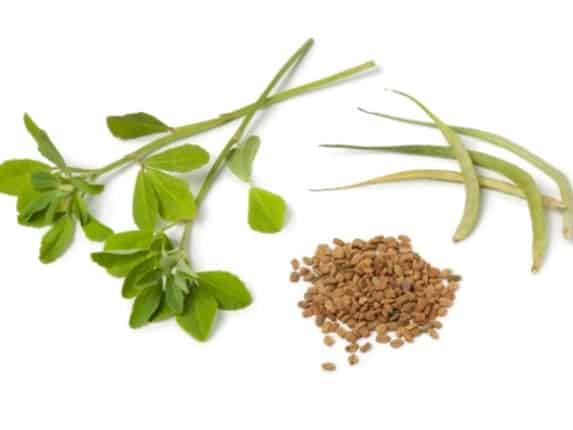
Fenugreek seeds are also very common spices used in many households. However, it is also valuable as a medicinal herb. It has anti-inflammatory properties that lower the swelling of the cyst. It can do wonders as it also eliminates the pain due to the cyst.
Things You Will Need:
- 1 teaspoon fenugreek seeds
- Half a glass filled with water
Do:
- Boil the fenugreek seeds and strain the water.
- Drink this decoction after the meal.
Drink this once every day.
Causes Of Pilonidal Cyst
The exact cause of pilonidal cyst is still not certain. However, there are various reasons that may cause pilonidal cyst. These include:
1. Friction
Friction and pressure may cause a pilonidal cyst. Some activities that cause friction may lead to cyst such as:
- Bicycling
- Rubbing skin against skin
- Tight clothes
- Forcing the hair down into the skin
- Sitting for long hours in the same position
2. Ingrown Hair
Some people also say that ingrown hair may also lead to the cyst infection. It is because the skin responds to them. The skin supposes them to be a foreign body. In response to it, the skin forms a cyst around the hair. This process explains the formation of the cyst in parts other than the tailbone area. Doctors often find hair follicles inside the nest. Also, pilonidal means ‘nest of hair’.
Cysts can also develop on the skin between the fingers. It is more common among barbers and dog groomers.
3. Stretching Of The Skin Layers
There is another theory that states one more cause of the pilonidal cyst. Basically, our skin is not a single layer. Instead, our skin consists of many layers. The deep layers of the skin stretch and the hair follicle enlarges. Due to the enlargement, the follicles rupture. Cyst forms around the ruptured follicles.
4. Trauma
Experts also believed that trauma could be a possible cause. During world war ll, many soldiers suffered from pilonidal cyst. Experts believed that it was due to the chronic irritation in that area. It had occurred when the soldiers rode in jeeps over bumpy terrains. This condition was known as Jeep disease. But it was all theory and there are no experimental proofs.
5. Sacral Dimple
Some newborns are born with an indentation above the cleft of the buttocks. This is known as a sacral dimple. If any bacteria infect the sacral dimple, it may develop into a cyst.
What Are The Risk Factors For A Pilonidal Cyst?
There are some factors that increase the risk of getting this infection. All of them have been mentioned here. These include:
- Male predominance- It is seen that pilonidal cyst is more common in men. It is true that women also get this infection. Studies show that it is four times more often in men than women.
- Young age- Young age is also a risk factor for the pilonidal cyst. It is often found in men who are in their 20s. This shows that late teenagers are more prone to this infection.
- Sedentary lifestyle (lack of physical activity)
- Thick and excessive body hair
- Occupation that demands prolonged sitting
- Family history
- Improper or local shaving
- Being overweight
- Excessive sweating
- Pilonidal cyst in the past
Symptoms Of Pilonidal Cyst
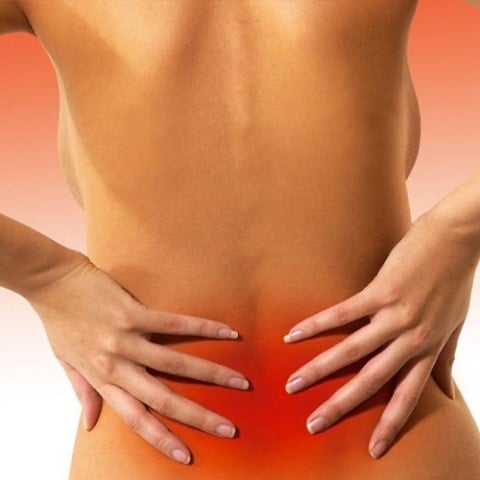
- Acute fever
- Pain and discomfort in the tailor bone area
- Swelling
- Low back pain
- Redness
- Discharge of pus or blood (when the abscess ruptures)
- Foul odor
- Tenderness to the touch
How To Diagnose Pilonidal Cyst?
First, a physical examination is done by the doctor. The location at the top of the buttocks is a major characteristic of pilonidal cyst. A cyst looks like a large pimple. It is swollen and reddish in color. It may also contain pus.
Following are the questions a doctor may ask:
- When did you first feel symptoms of the pilonidal cyst?
- Have you had this problem before?
- Have you had a fever?
- Do you take any medications or supplements? If yes, please name them.
Then, blood tests are performed, but only for severe conditions. Otherwise, only a physical examination is needed. Usually, there is no need for imaging tests.
How To Prevent The Pilonidal Cyst?
1. Exercise

Exercise stimulates the blood circulation in your body. A reduced blood flow around the cyst makes it more severe. A regular exercise maintains regulated blood flow.
It keeps the symptoms of the cyst at bay. Do light exercises regularly. You can do aerobic exercises. It will let your cardiovascular system function properly.
You can also take up yoga for maximum benefits. Else, walking around your house is also a good option. Don’t exhaust yourself working out for long hours. You need to do light exercises.
2. Healthy Diet

A healthy diet can be very beneficial. It helps in preventing the condition from getting worse. Pilonidal cysts spread very quickly when your immunity is too weak. The various home remedies given in this article also boost your immunity.
Along with that, you must take a nutritional diet. You need to eat healthy and balanced diet. Have sufficient amount of proteins and vitamins in your diet. Fruits are must to include in the diet. So here are the foods you must include in your diet:
- Mushrooms
- Chicken
- Tomatoes
- Citrus fruits
- Onions
- Ginger
- Yogurt and curd
These are only a few foods to mention. You can add other foods that are healthy. Fresh and colorful fruits are always to the rescue. Also, avoid fast foods and alcohol intake completely.
3. Avoid Irritants
Never apply any cream or gel to the affected area. It may increase the severity of the infection. Instead, follow the given method to clean the area:
- Use mild soap and water to clean the area.
- Pat dry using a clean towel.
4. Regular Cleaning
It is vital to keep the area neat and clean. You must rinse it off with water two to three times a day.
Else, you can also use glycerin as a cleanser. It is much better than using creams or gels. It helps in cleaning dirt from your skin. It also helps to keep the coccyx area clean that prevent the formation of the cyst. Avoid using harsh soaps that may irritate the skin.
5. Keep The Area Free Of Hair
Pilonidal cysts develop due to ingrown hair. So, to prevent a cyst, maintain clean areas. It is best to remove hair. Keep the areas around tailor bone free of hair. You can use a sterilized shaving blade, an epilator or depilatory cream. Be careful in removing hair.
Avoid creams that can cause irritation. You must not do this during the infection. But do this only after your cysts heal completely. People who have not developed cyst ever can do this to ensure prevention.
Some Other Tips And Precautions To Prevent A Pilonidal Cyst
- Always maintain a clean and hygienic bathroom. Wipe the bathrooms with water and tissues after use.
- Do not allow any kind of moisture in the affected area.
- Never touch the area with dirty hands as it may cause further infections.
- Do not poke the cyst with sharp tools. It will promote fluid discharge but in a forced manner that may worsen the condition.
- During the infection, sleep on your side on the stomach. Well, only if you can do so.
- Leave the wound open to the air when at home. People often say air contact is necessary for quick healing.
- Cover the wound with a bandage when you are going out.
- Include anti-inflammatory food in your diet. Foods include:
- Walnuts
- Fatty fish
- Almonds
- Olive oil
- Green leafy vegetables
When To See A Doctor?
Home remedies are very effective to treat pilonidal cysts. However, if there is no improvement in the condition, consult a doctor. When the condition is very severe, you must go to a doctor. A colorectal specialist is the best medical professional to give you advice.
FAQs
1. Is A Pilonidal Cyst Cancerous?
There are very low chances of getting a pilonidal cyst cancerous. However, it can lead to cancer if it is present for a long period. Untreated cyst slightly increases the risk of developing squamous cell carcinoma. It is kind of skin cancer. Thus, you must not leave it untreated.
2. Are Pilonidal Cysts Common?
Yes, pilonidal cysts are very common. But it is more common in men than women. Also, men with the age between 20 and 30 are at high risk to suffer from the pilonidal cyst.
3. How Painful Is A Pilonidal Cyst?
A pilonidal cyst can be very painful depending on the severity of the condition. Sometimes, when it is more severe you may have pain in your knees. You must see your doctor if it happens to you.
4. How Long Do Pilonidal Cysts Last?
It depends on the severity of the condition. It may take few days or few months. It may take up to 6 months for the pilonidal cyst to heal completely.
5. Can You Leave A Pilonidal Cyst Untreated?
The answer is a big no. No matter what; you cannot leave a pilonidal cyst untreated. You must treat it in the initial stages of the infection. It is easier to cure it when the condition is mild with the home remedies. At that time, you don’t need any surgery or medications. But when it is severe, you need a medical professional.
However, if left untreated, it may cause complications. Besides, being cancerous it will be very painful. You will find difficulty in sitting and defecating. So, don’t ever think of leaving it untreated.
6. Do Pilonidal Cysts Always Hurt?
No, pilonidal cysts always don’t hurt. However, there are very few cases of the painless cyst.
7. Why Do Pilonidal Cysts Smell So Bad?
An infection in the cyst results in pus or blood in the cyst. The cyst filled with pus gives a foul odor.
8. Can A Pilonidal Cyst Come Back?
Yes. Pilonidal cysts can come back. Your body does not get immunity for a pilonidal cyst. Instead, a pilonidal cyst in the past is a risk factor for developing it again.
Final Talk
The pilonidal cyst is a very painful condition. You cannot live with the pain and discomfort. You can use any of the home remedies to treat pilonidal cyst.
We have discussed the most effective remedies. They are cost effective and come up with no or fewer side effects. When you take medicines for pain, they have long-term consequences.
You may not know but no conventional medicine is without side effects. The pilonidal cyst has visible symptoms. It is easy to recognize this infection in its initial stages.
You must not wait for it to turn severe. Try using these home remedies. You will notice the results within a week if the condition is mild.
Also, take care of hygiene to avoid this condition. You can follow the tips given for prevention.

